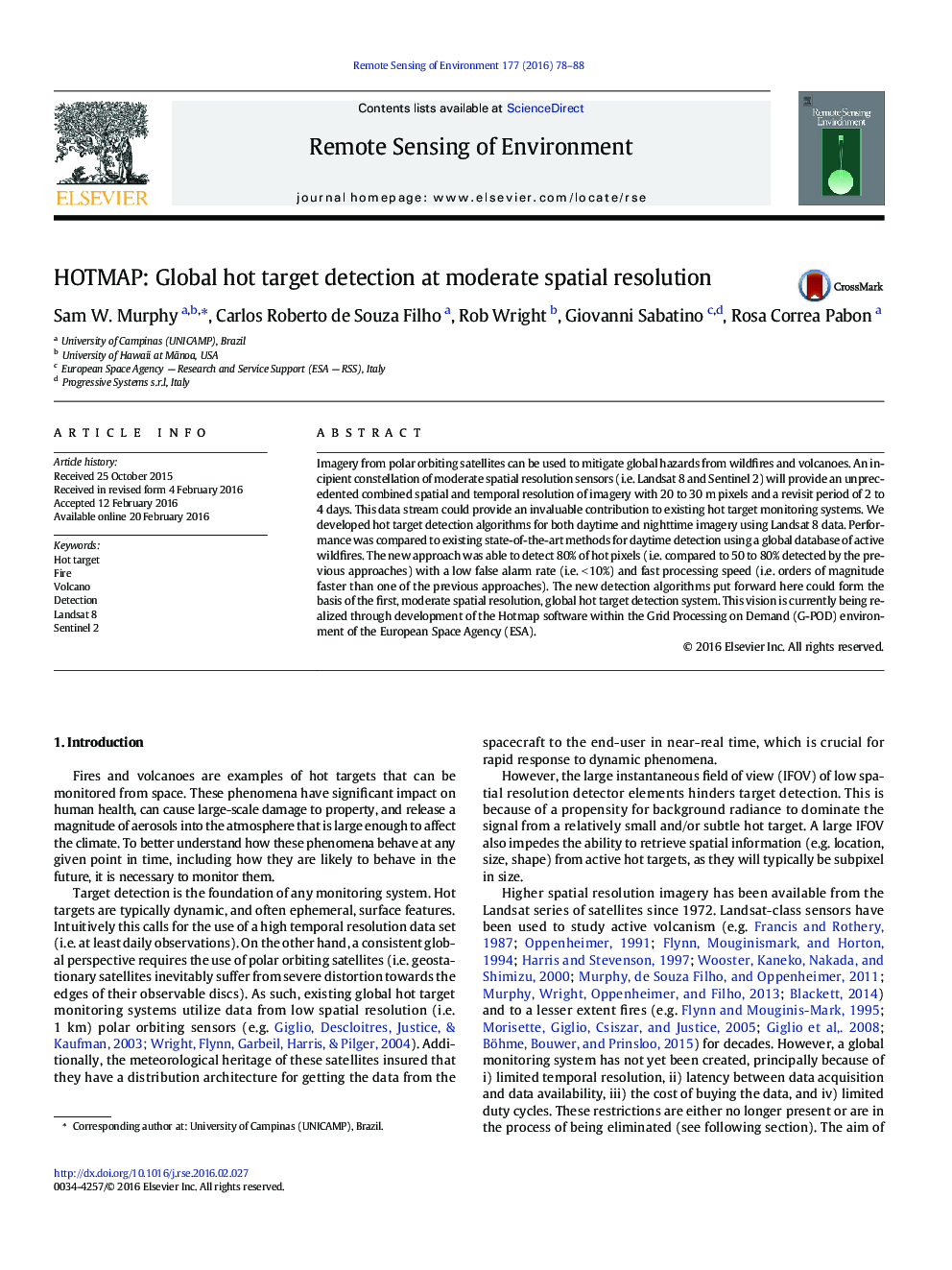| Article ID | Journal | Published Year | Pages | File Type |
|---|---|---|---|---|
| 6345415 | Remote Sensing of Environment | 2016 | 11 Pages |
Abstract
Imagery from polar orbiting satellites can be used to mitigate global hazards from wildfires and volcanoes. An incipient constellation of moderate spatial resolution sensors (i.e. Landsat 8 and Sentinel 2) will provide an unprecedented combined spatial and temporal resolution of imagery with 20 to 30Â m pixels and a revisit period of 2 to 4Â days. This data stream could provide an invaluable contribution to existing hot target monitoring systems. We developed hot target detection algorithms for both daytime and nighttime imagery using Landsat 8 data. Performance was compared to existing state-of-the-art methods for daytime detection using a global database of active wildfires. The new approach was able to detect 80% of hot pixels (i.e. compared to 50 to 80% detected by the previous approaches) with a low false alarm rate (i.e. <Â 10%) and fast processing speed (i.e. orders of magnitude faster than one of the previous approaches). The new detection algorithms put forward here could form the basis of the first, moderate spatial resolution, global hot target detection system. This vision is currently being realized through development of the Hotmap software within the Grid Processing on Demand (G-POD) environment of the European Space Agency (ESA).
Related Topics
Physical Sciences and Engineering
Earth and Planetary Sciences
Computers in Earth Sciences
Authors
Sam W. Murphy, Carlos Roberto de Souza Filho, Rob Wright, Giovanni Sabatino, Rosa Correa Pabon,
